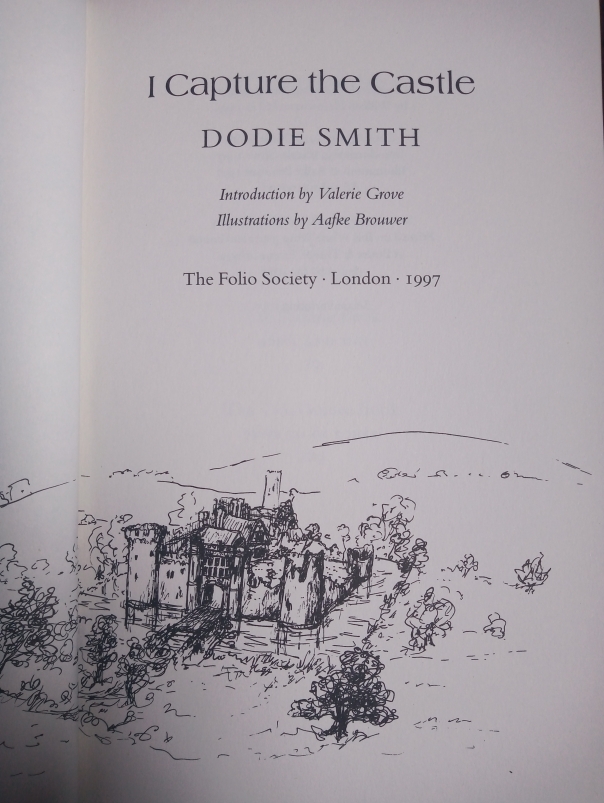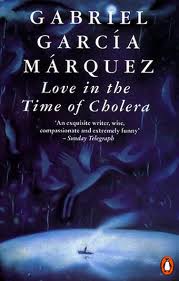I Capture the Castle – Dodie Smith
“I write this sitting in the kitchen sink” – I Capture the Castle probably has one of the most famous opening lines. 17-year-old Cassandra, our narrator, writes her journal from the castle that her family inhabits, attempting to ‘capture’ it. She is looking for somewhere different to write, to see if it gives her inspiration: “I have found that sitting in a place where you have never sat before can be inspiring. I wrote my very best poem while sitting on the hen-house.”
I enjoyed reading I Capture the Castle, a lovely children’s/young adult classic that I never read when I was younger. Light-hearted and full of humorous episodes, the novel is not without depth. It seems in lots of ways a conventional story, but it does not always take the turns you might expect and it does not end ‘happily-ever-after’.
Some of the funniest incidents are: when Cassandra and her brother, Thomas, lock their father in a tower in the castle to force him to write; when Cassandra and Neil go for a moonlit swim in the moat; and when Cassandra’s sister, Rose (wearing a fur coat), is mistaken for a bear and chased, though this episode is unrealistic and perhaps a little farcical.
When the novel opens, the family is going through a bleak time. Having moved to the castle after Cassandra’s father’s book success, they are now struggling to make ends meet and the reader is made acutely aware of Cassandra’s hunger and cold. Yet, there is a certain glamour to their poverty, living in their medieval mansion. The wealthy American landlords of the castle arrive and uplift as well as complicate the situation. Both Rose and Cassandra fall in love and we see the agony and delight it causes them, especially Cassandra.
She is melodramatic but also strict with herself, making crying a rare ‘luxury’, allowing herself to imagine events because she believes that then they won’t come true, and not writing too much about her feelings because “even a broken heart doesn’t warrant a waste of good paper.” It is a sweet coming of age tale that probably feels quite different when read as a teenager than as an adult and is marked through the change in voice as Cassandra matures.
The novel feels very ‘English’ with its picturesque Suffolk countryside, bizarre traditions on midsummer’s eve, picnics and sudden downpours. The Americans do not appreciate England in the same way. Set in the 1930s but published in 1948, after the Second World War, there is a growing sense of nostalgia for something about England that is lost, as Cassandra also looks back on the innocence of her childhood, no longer “consciously naïve”. A change in tone is echoed in the change in seasons, “A mist is rolling over the fields. Why is a summer mist romantic and autumn mist just sad?” The ending contains disappointment, although Smith also suggests that things will work out, and, in the final line, Cassandra seems to return to her cheerful girlish self.
Dodie Smith’s supporting characters are also unusual but loveable; for example, Cassandra’s talented but morose father who barely speaks, her enchanting and elegant stepmother who used to be an artist’s model, the kindly vicar who seems to see through Cassandra’s calm exterior, offering her tea and cake and encouraging her to simply sit in a church for comfort, and Stephen, the shy and doting lodger, who brings Cassandra poems. Early in the novel, Rose expresses that she wants to live in a Jane Austen novel, and later it seems this wish almost comes true when she is presented with the dilemma of marrying for love or money and Cassandra compares them to the Bennet sisters. The characters really are vividly drawn.
In reading this, I felt the childhood joy of reading a book as escapism and to find out what happens next, but at the same time not wanting it to be over. Cassandra writes that she does not like “brick-wall happy ending[s]” when “you never think any more about the characters” and Smith does not offer us such an ending – her characters will stay with you long past the final pages. She captures so much more than the castle.









